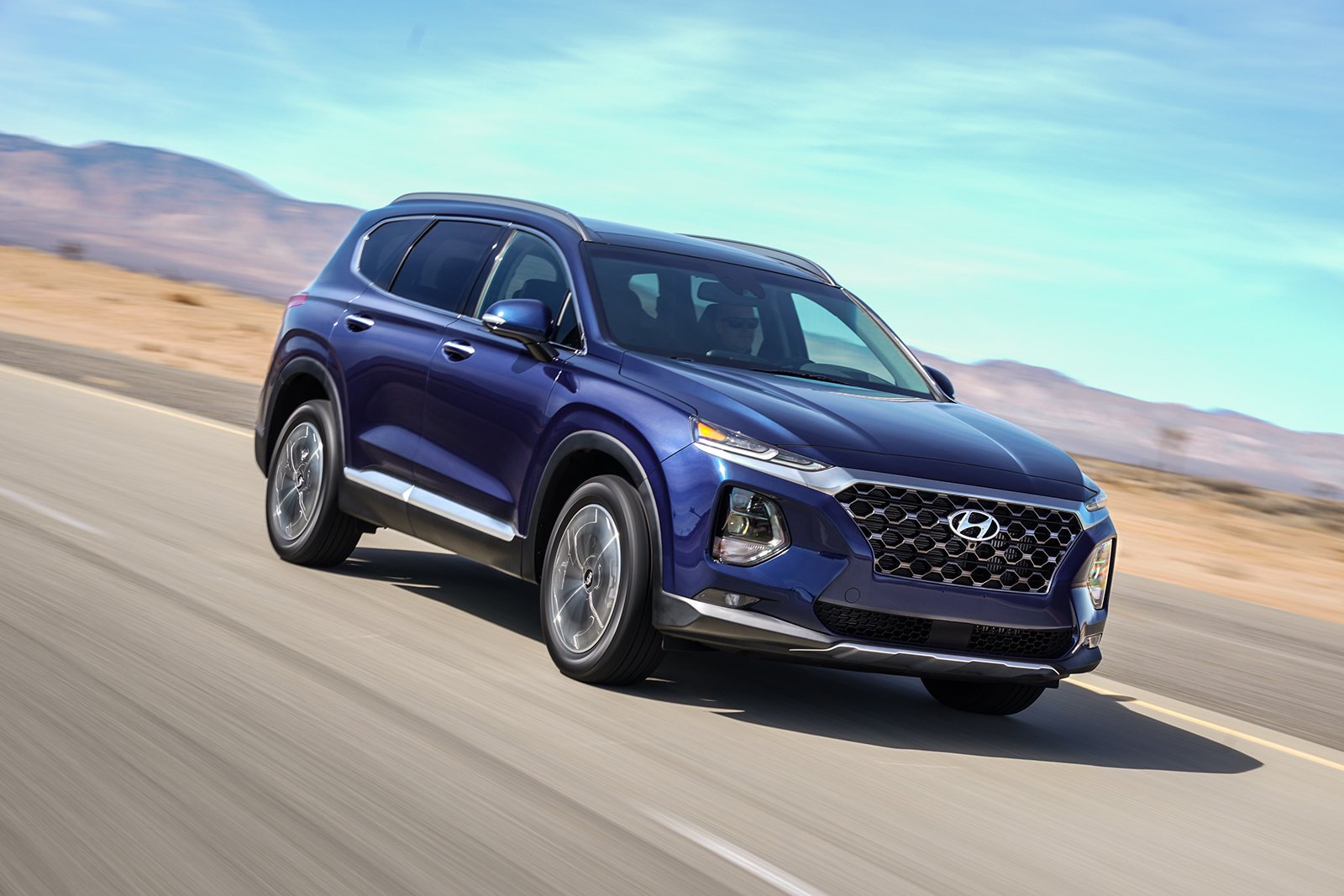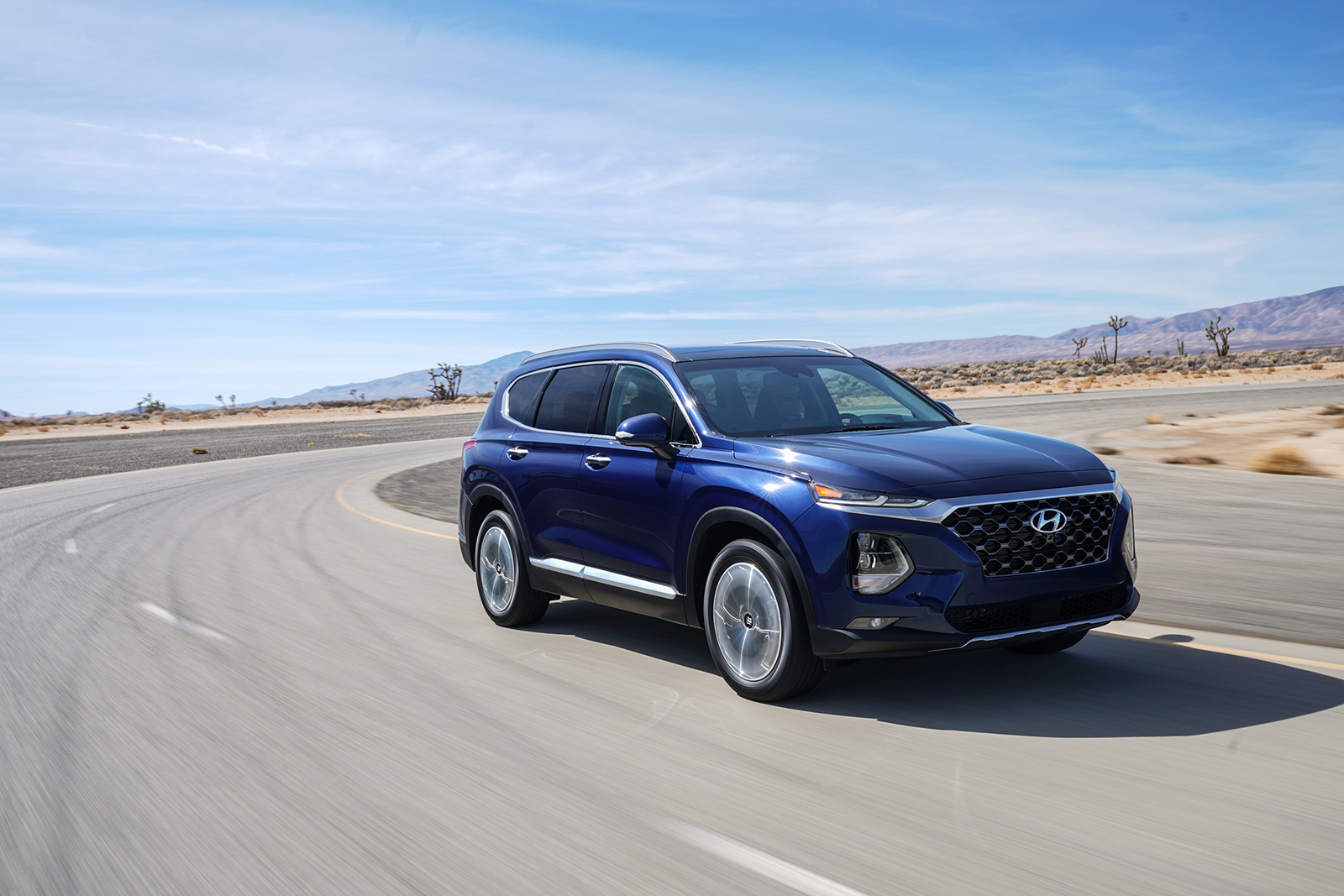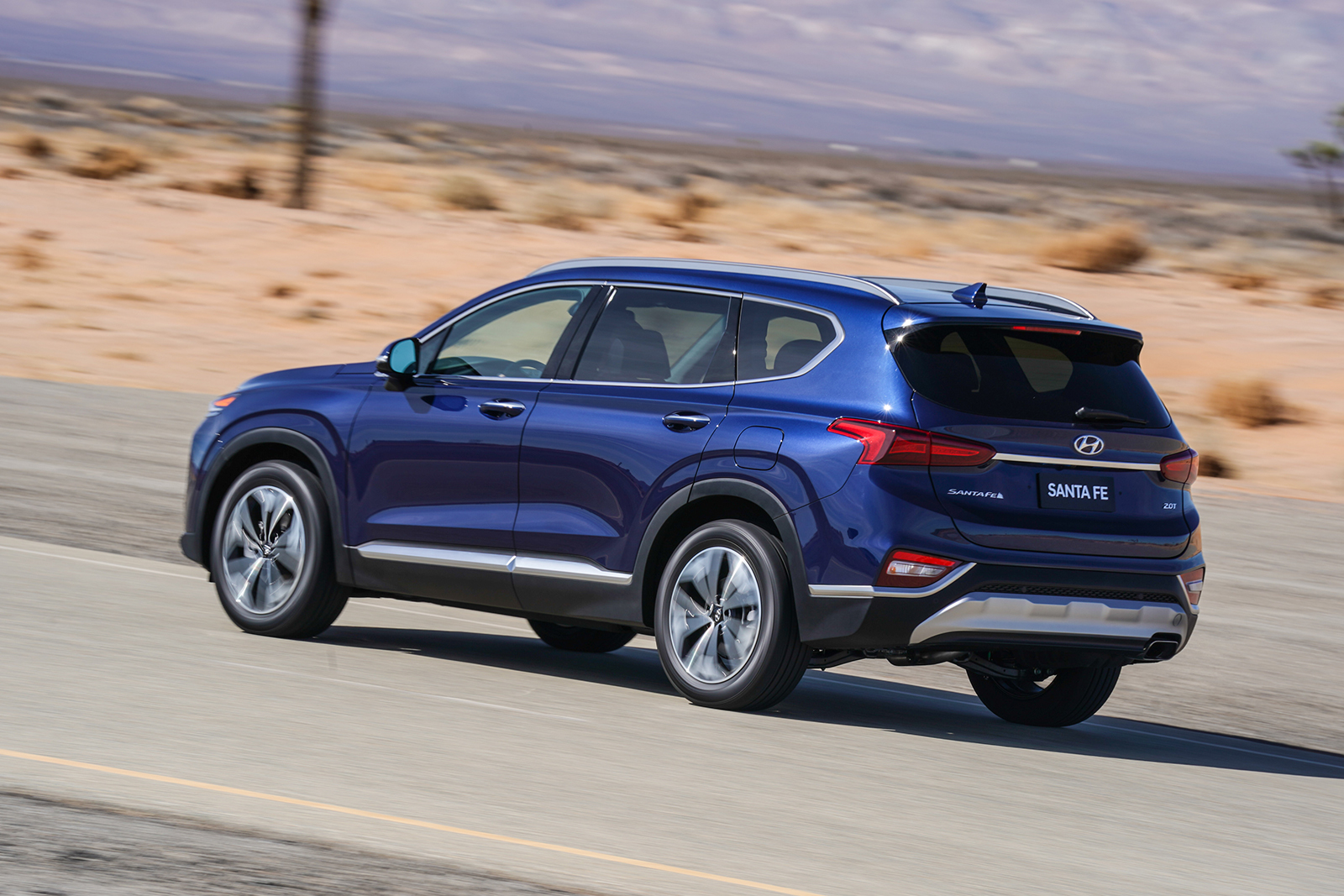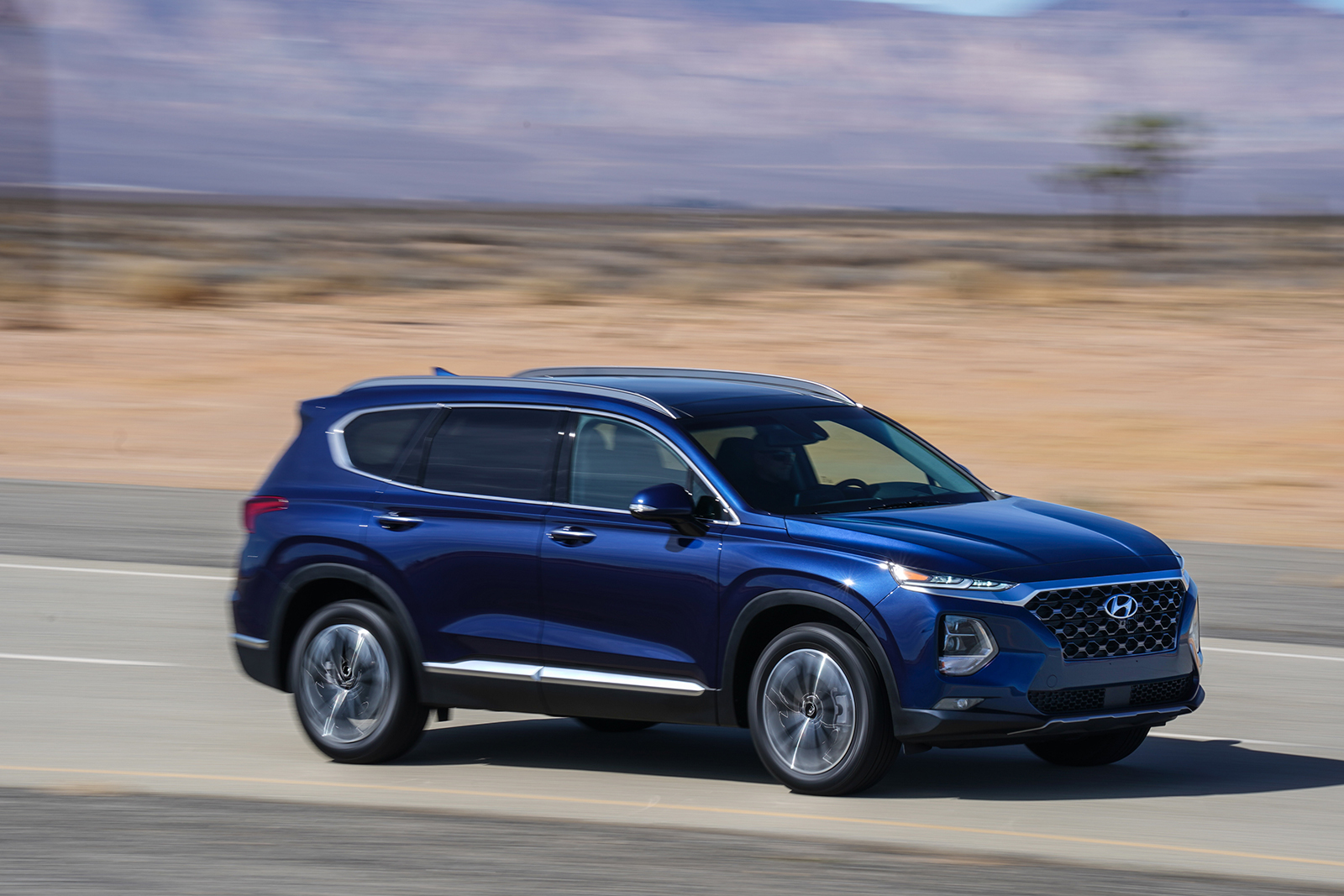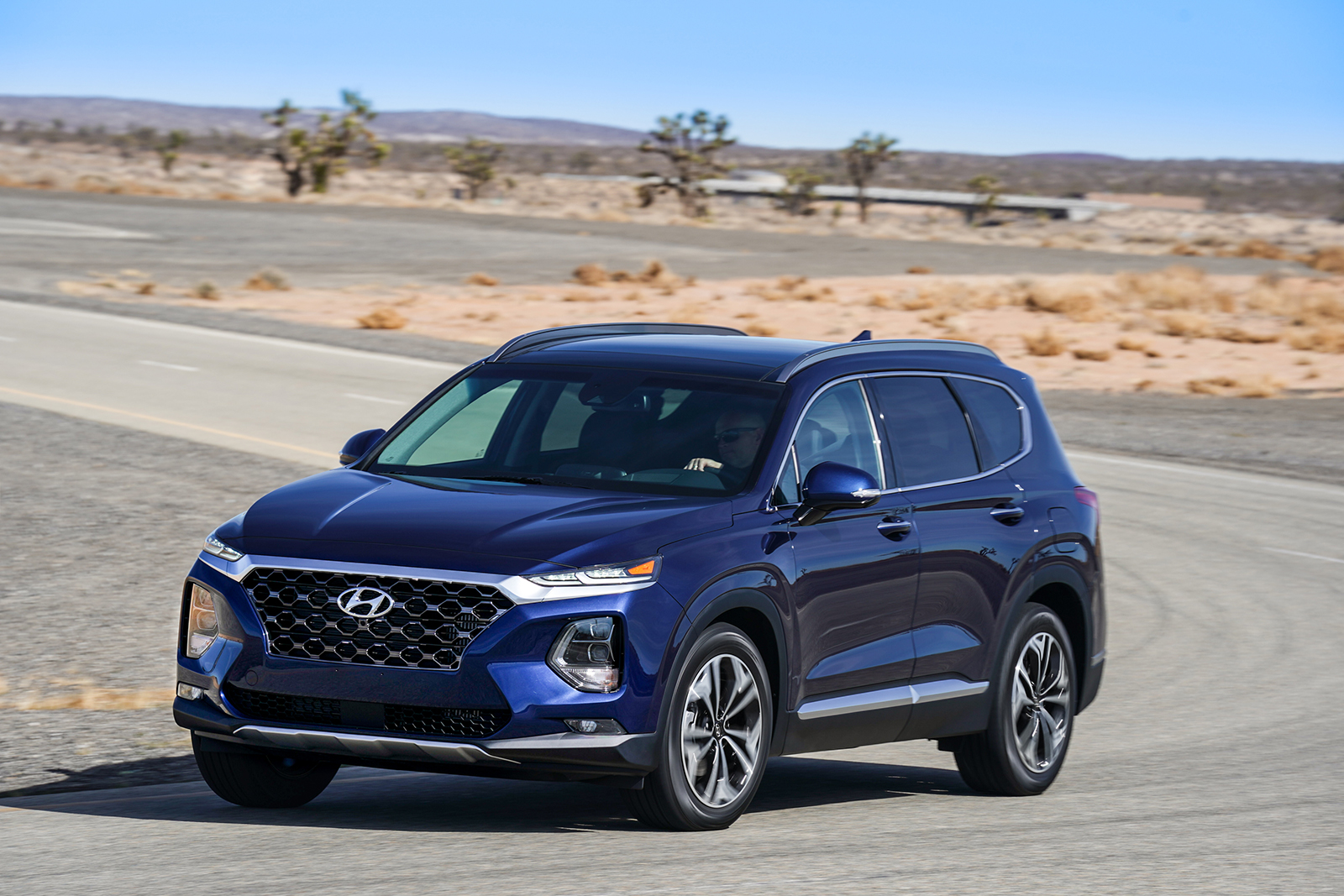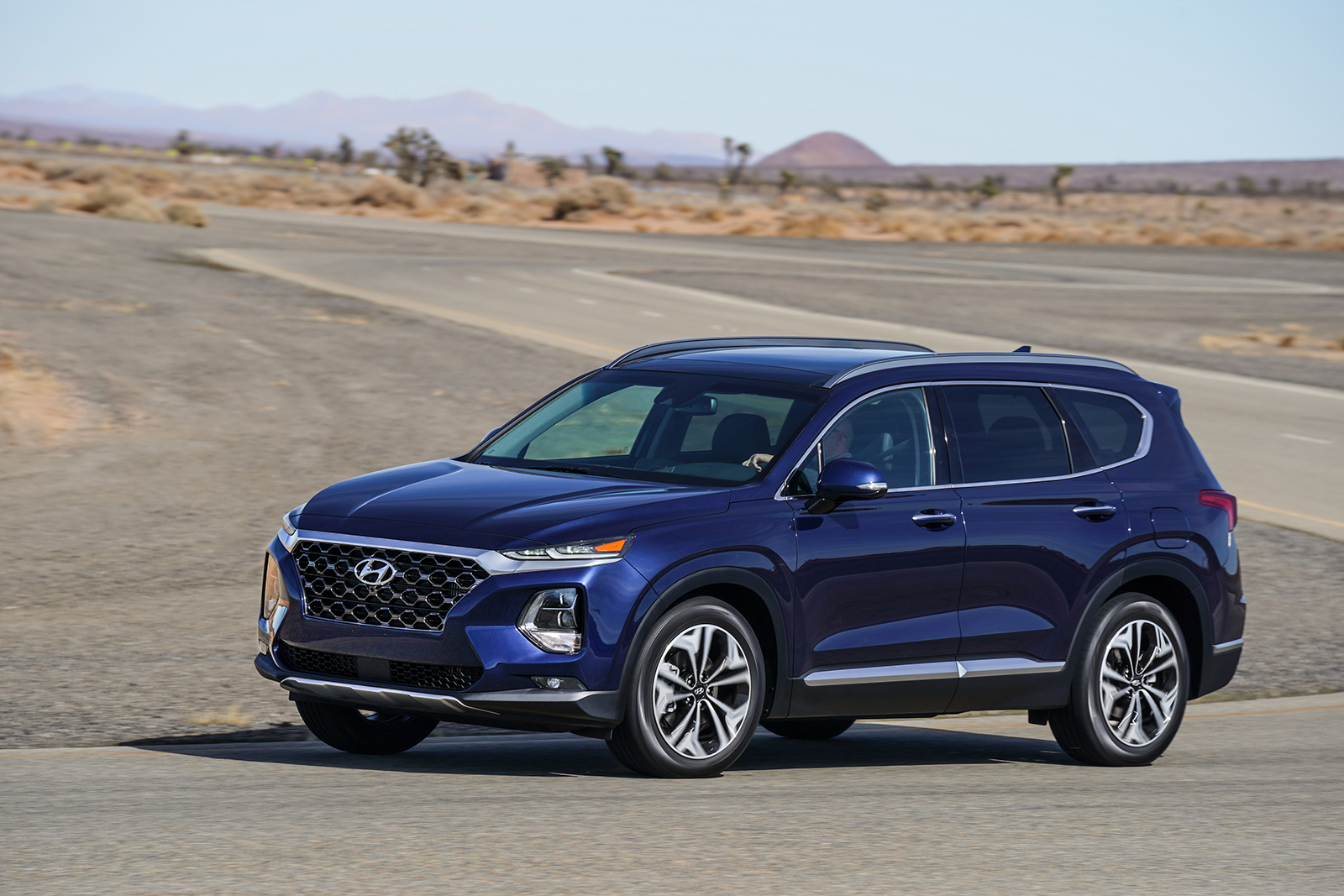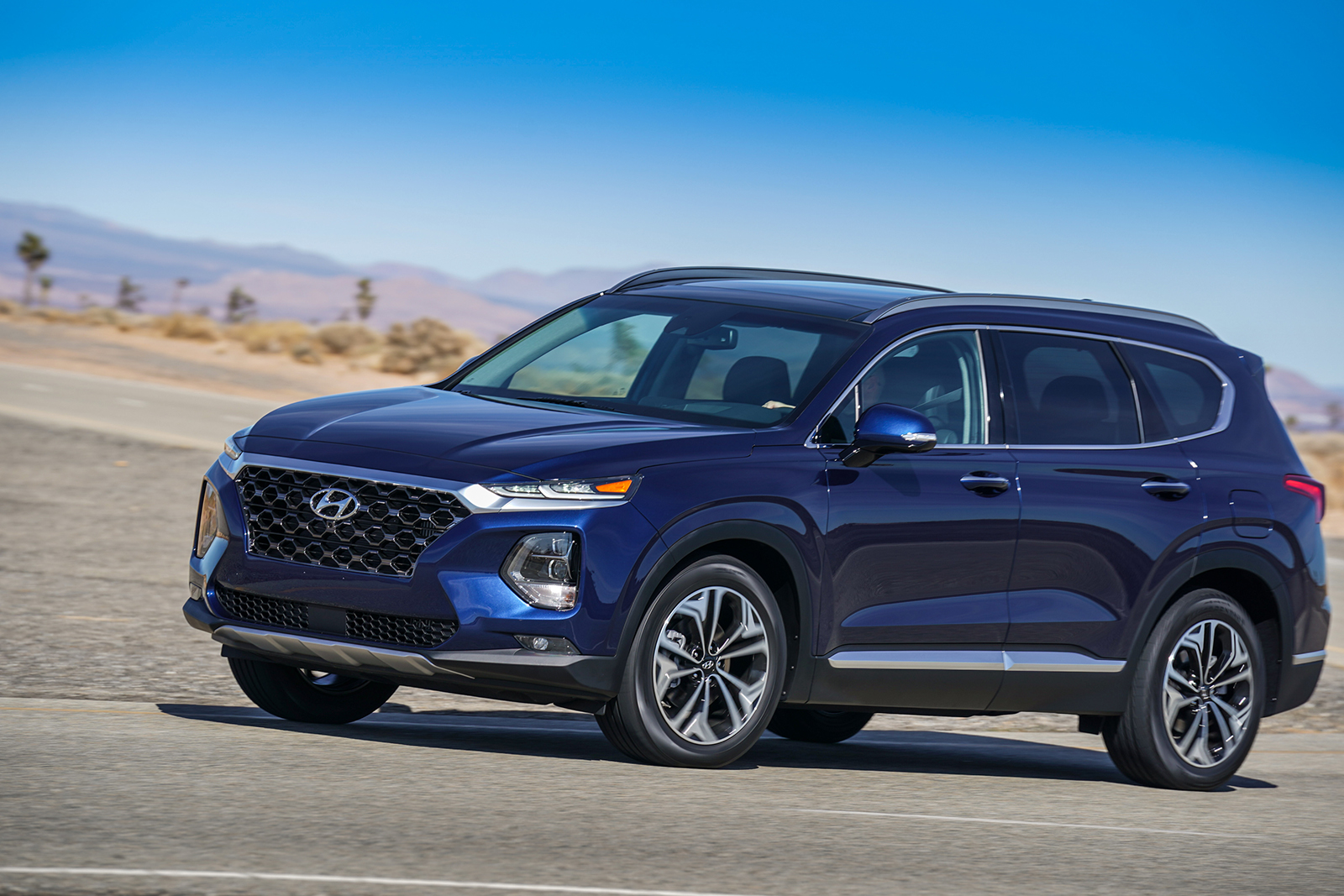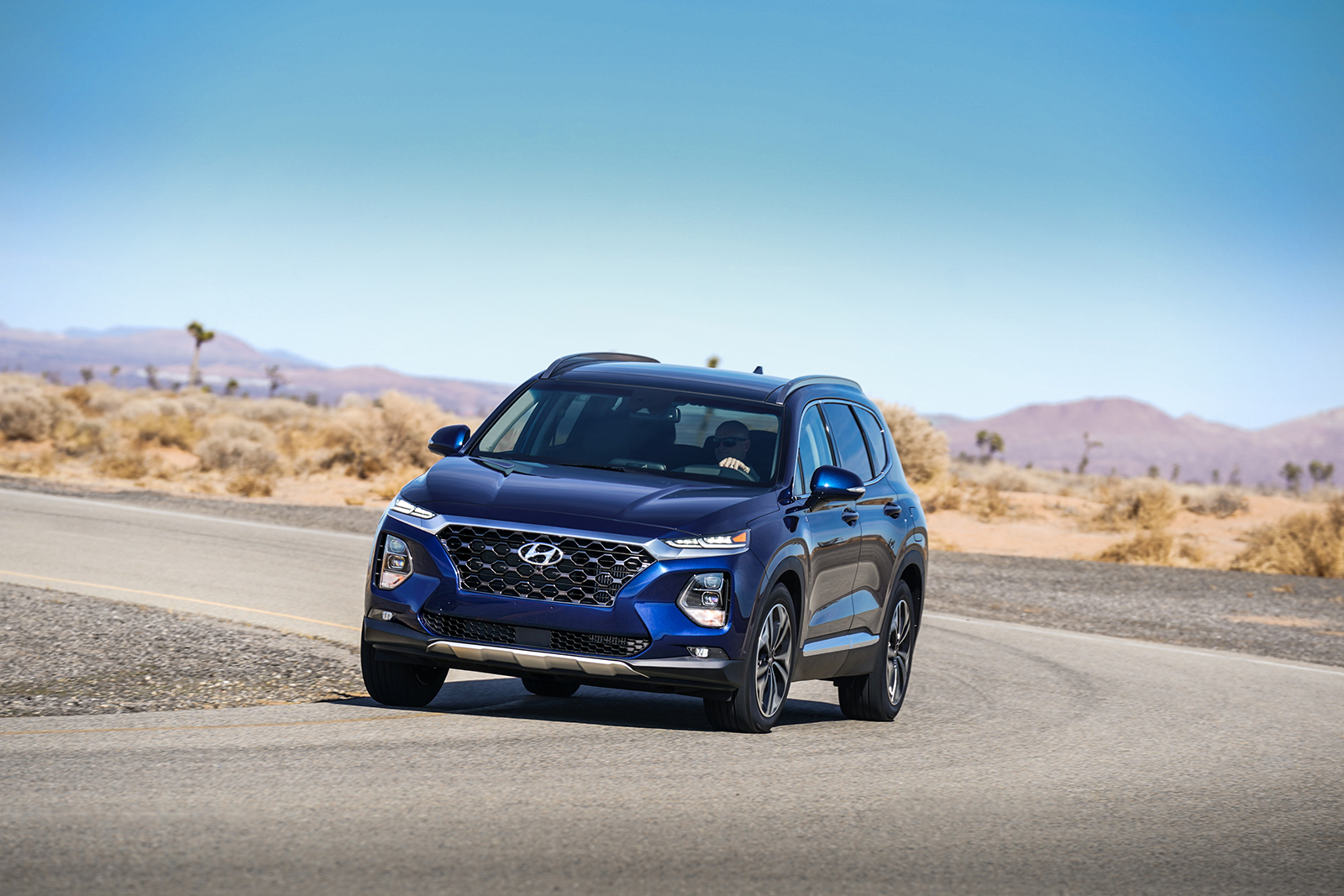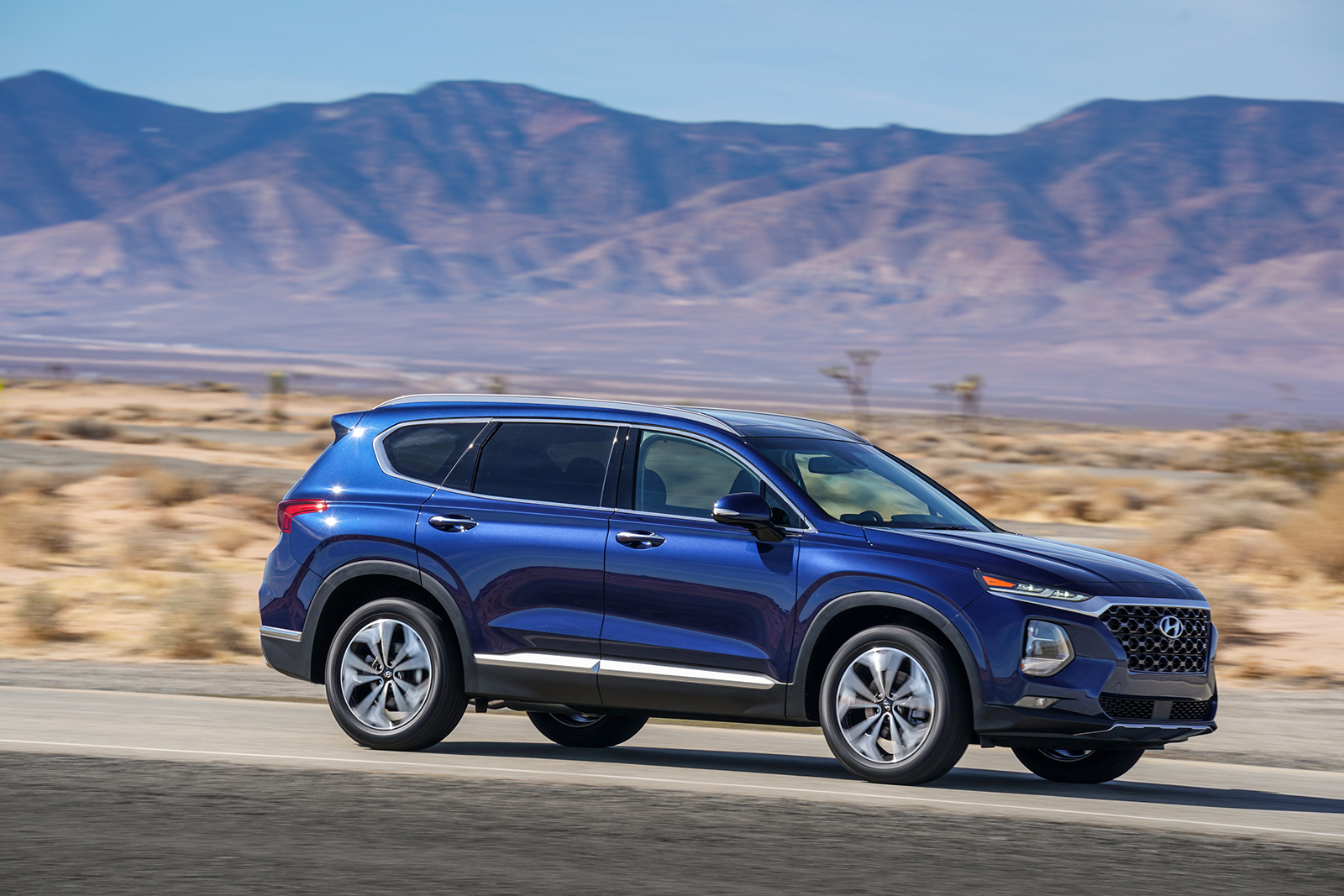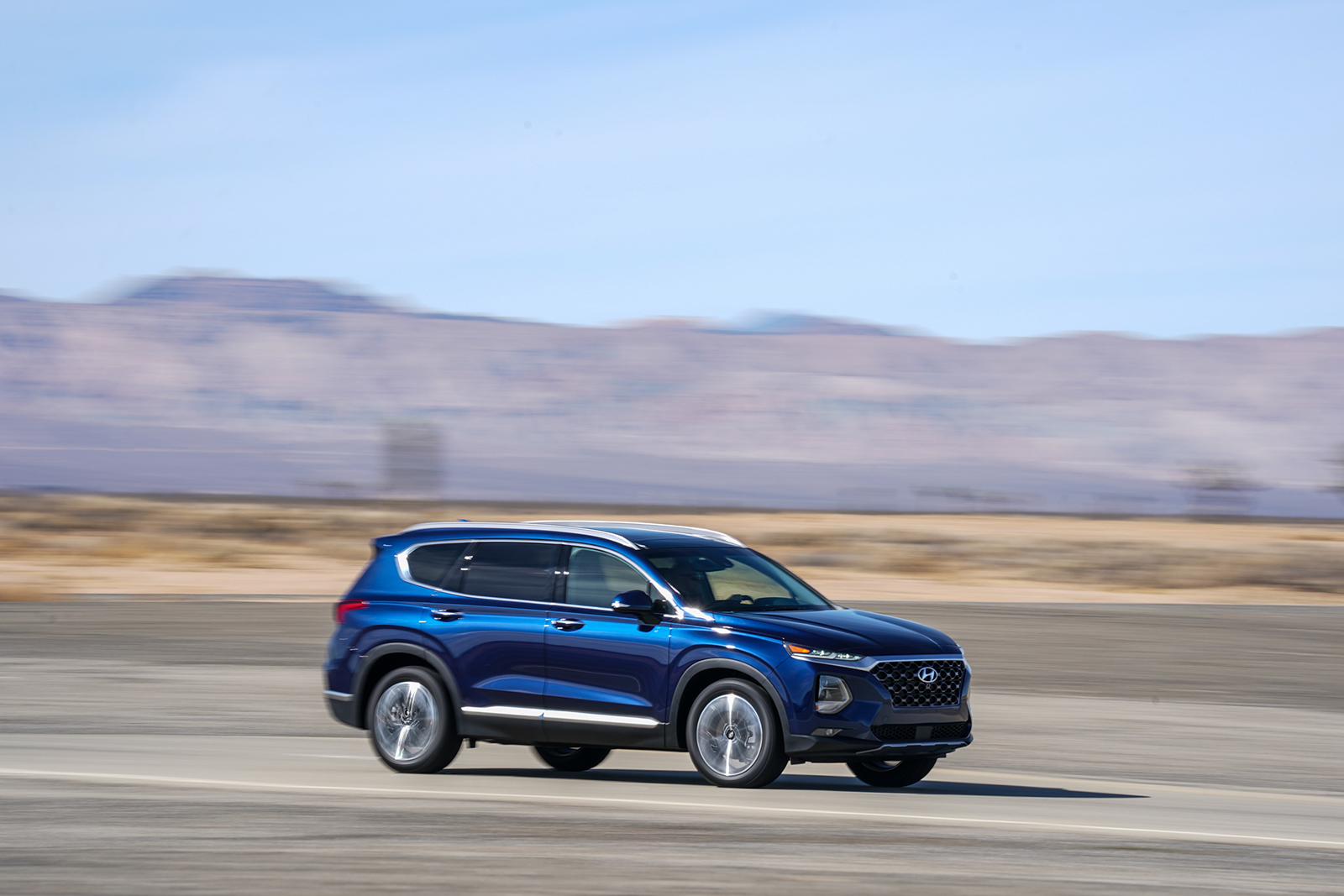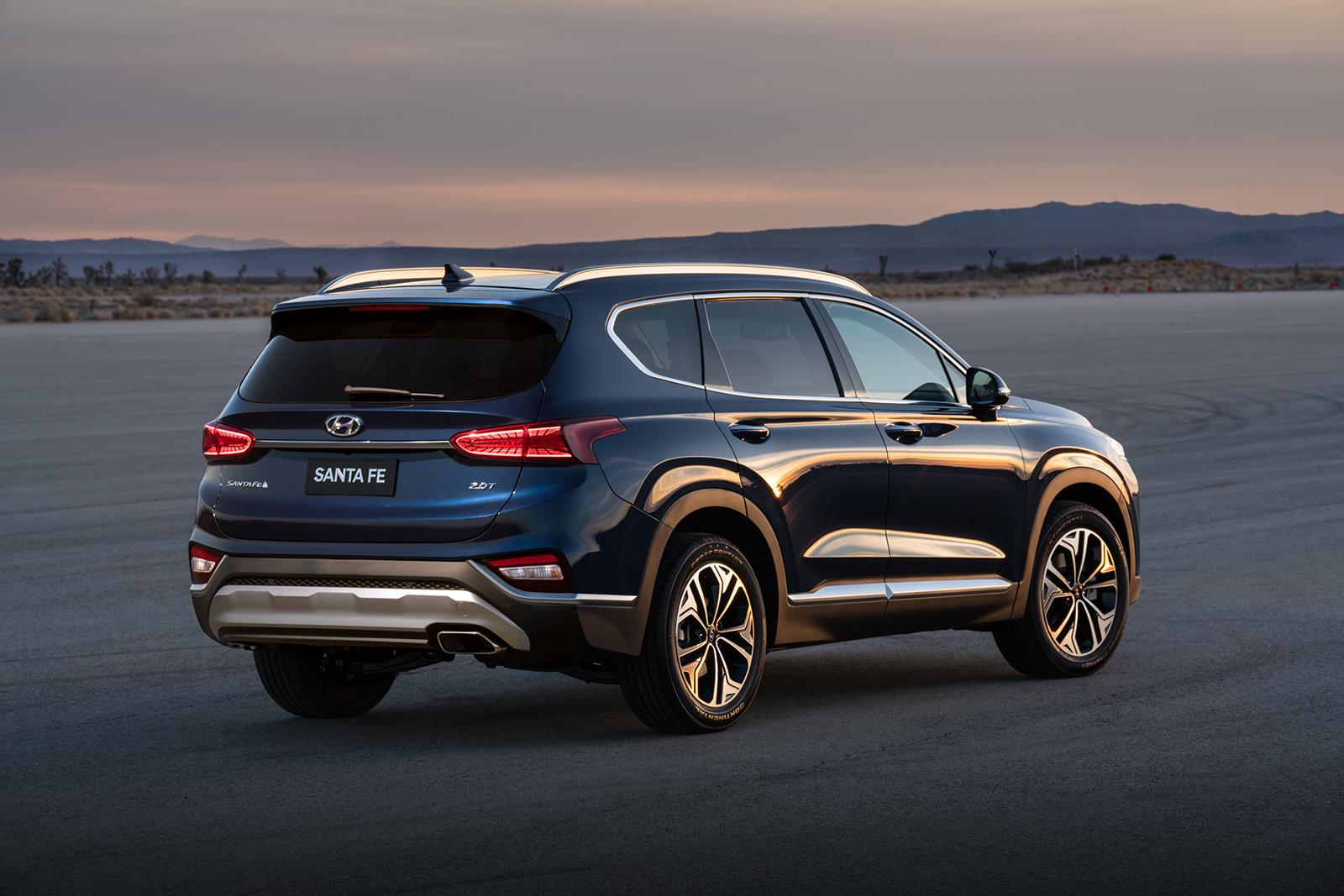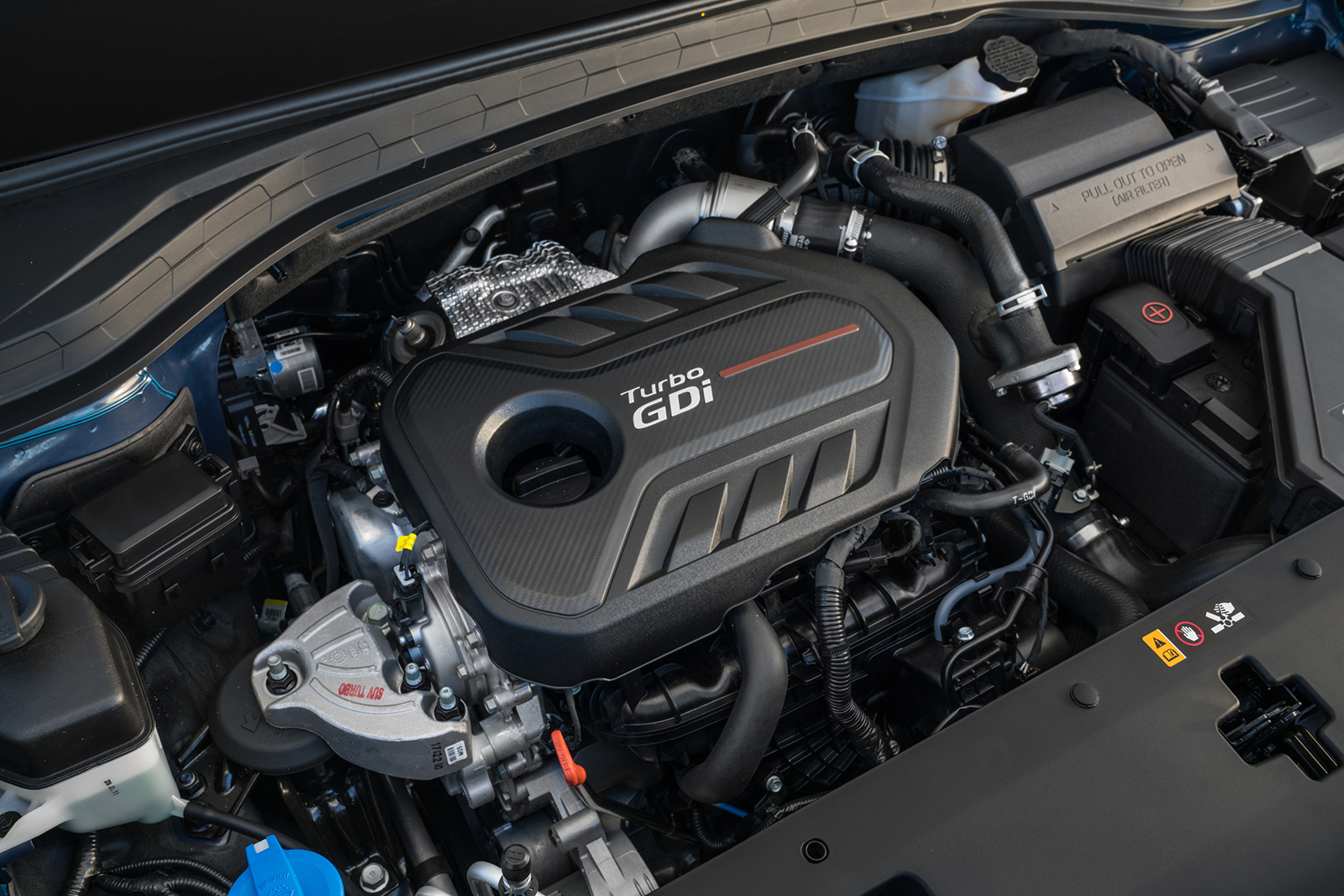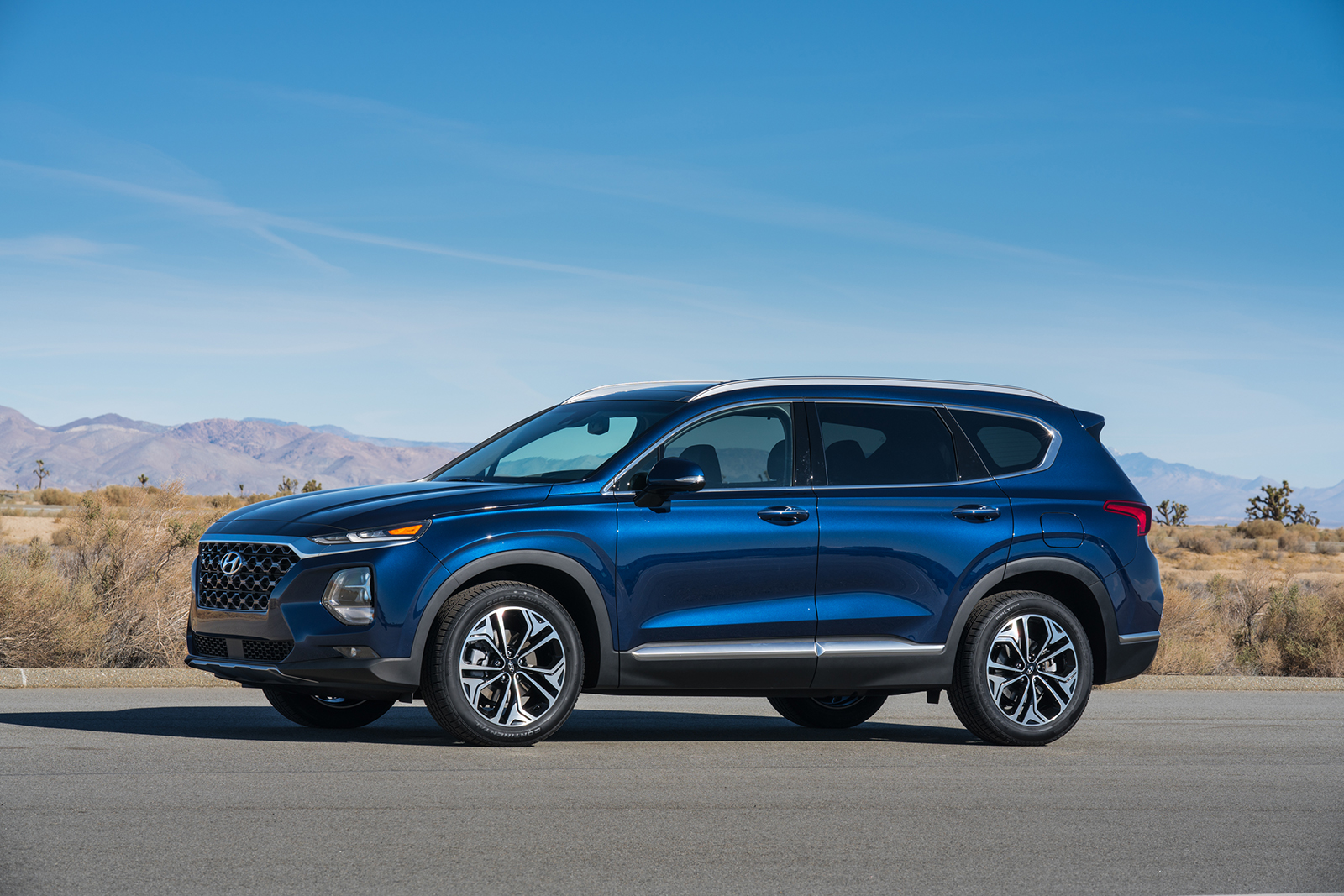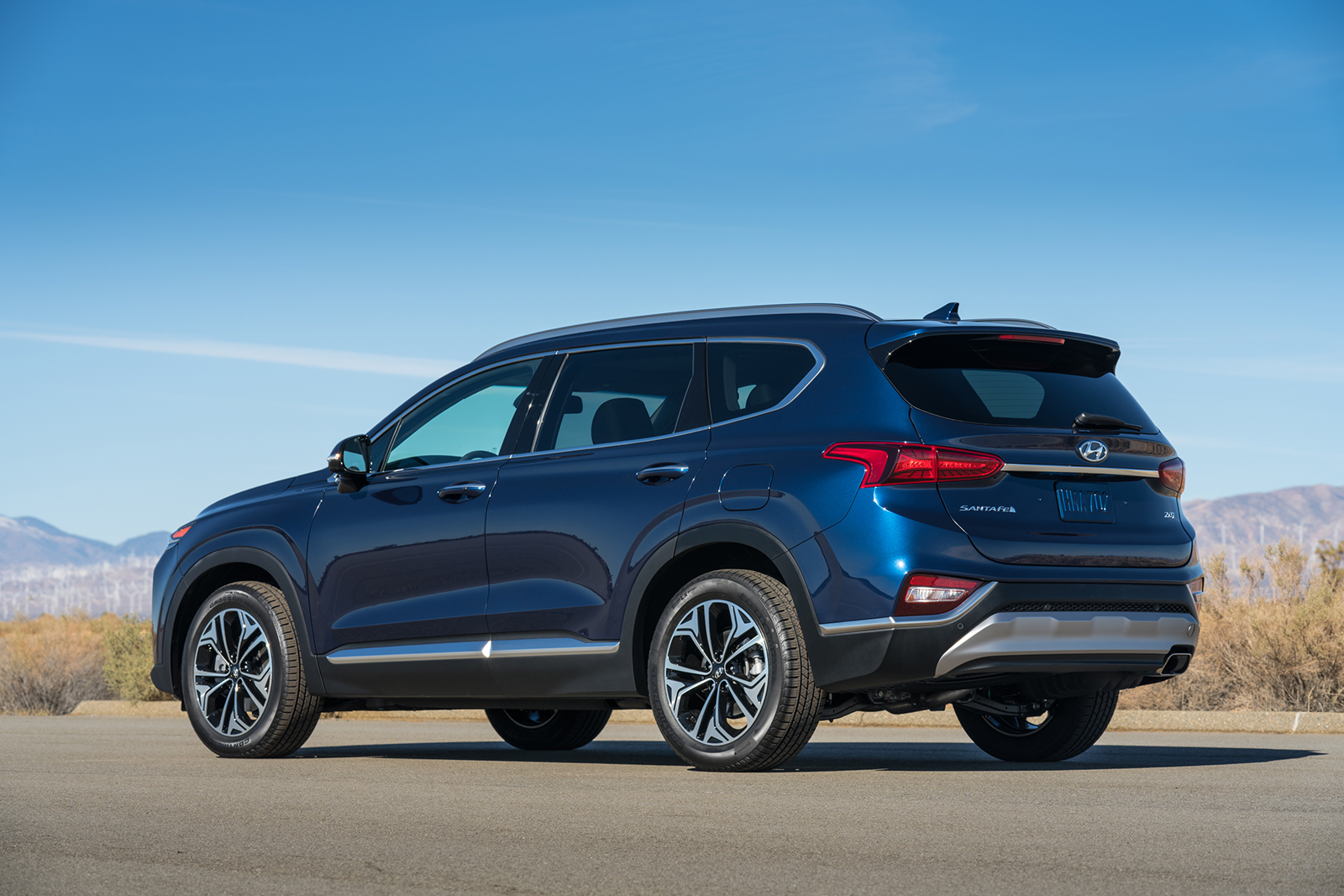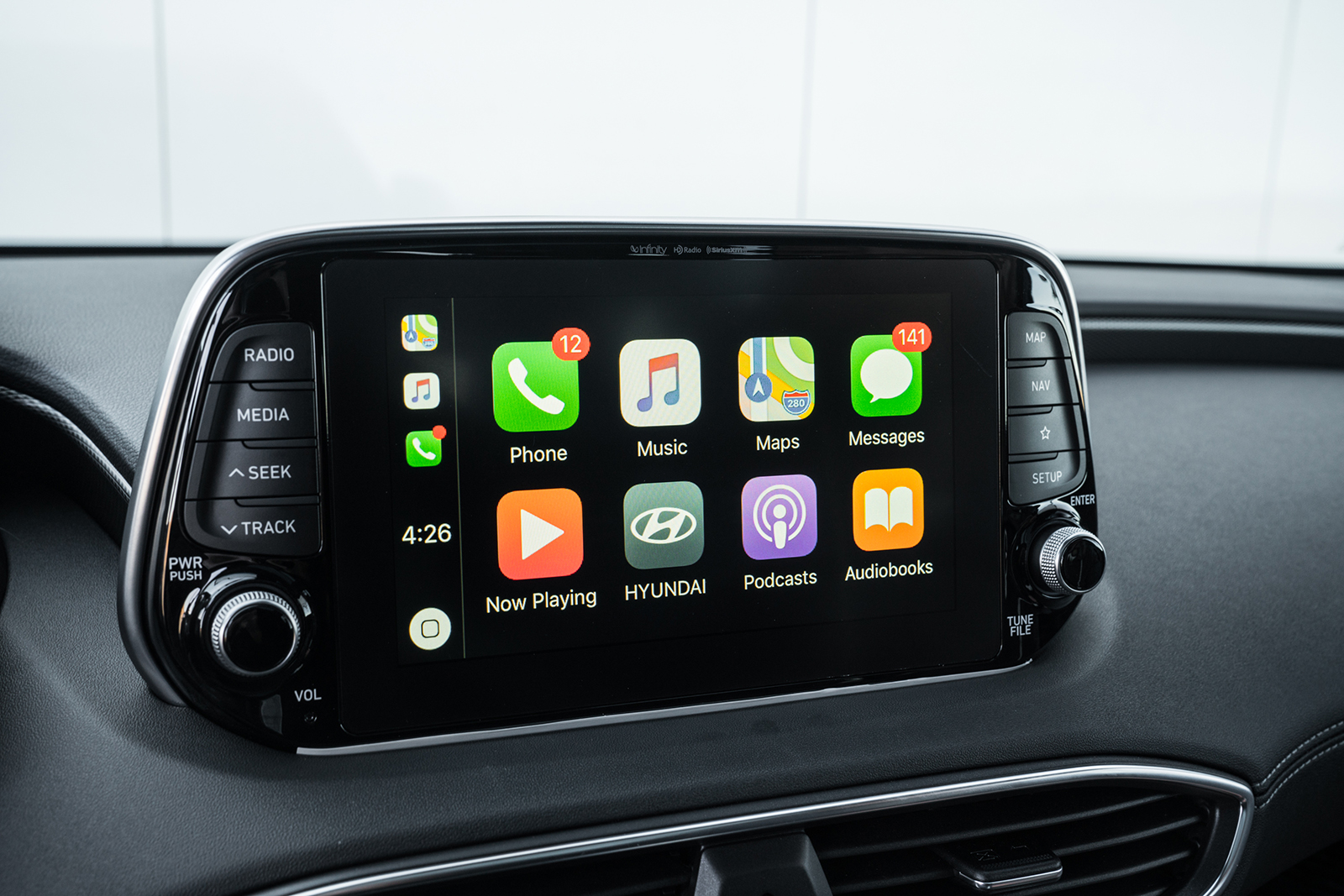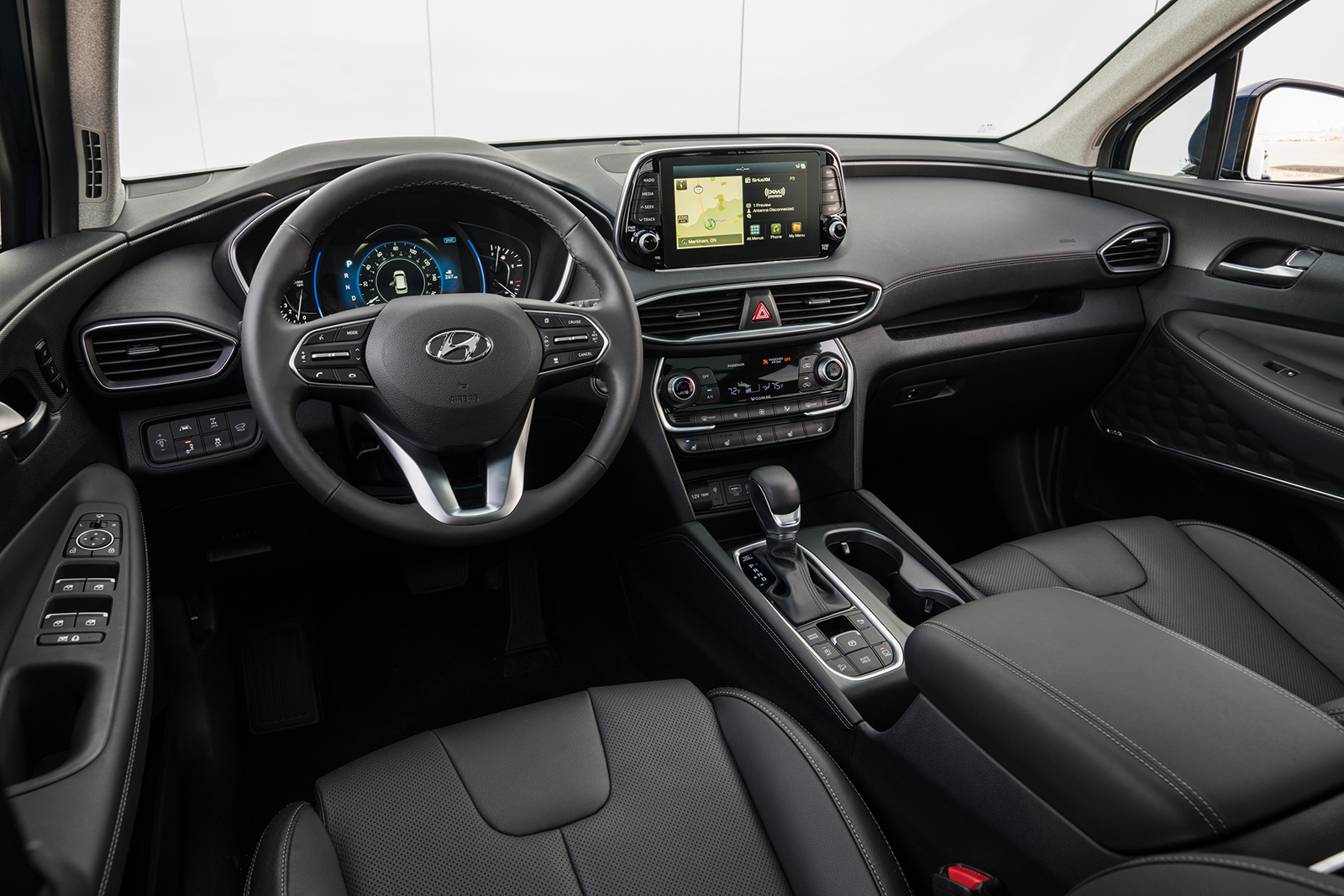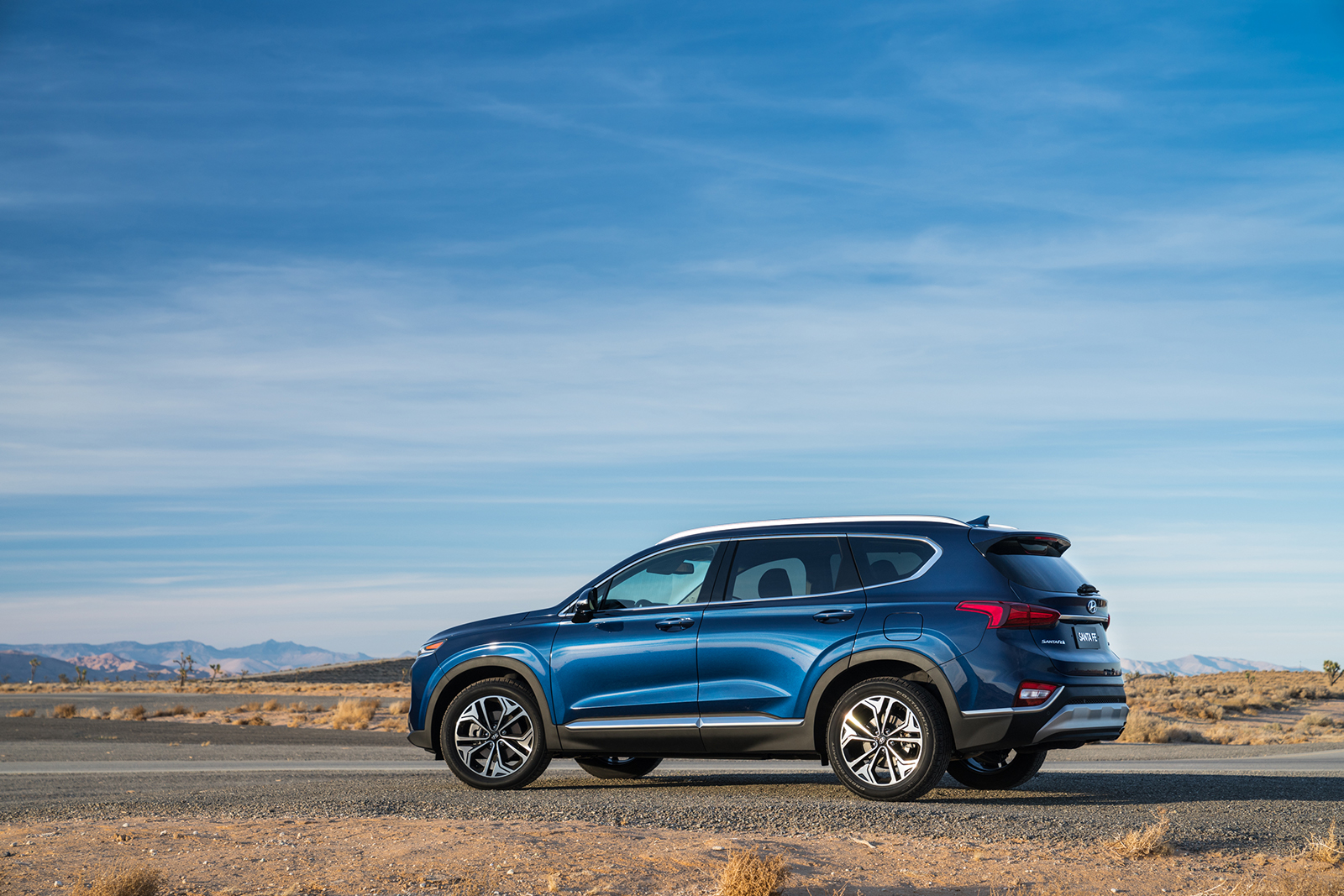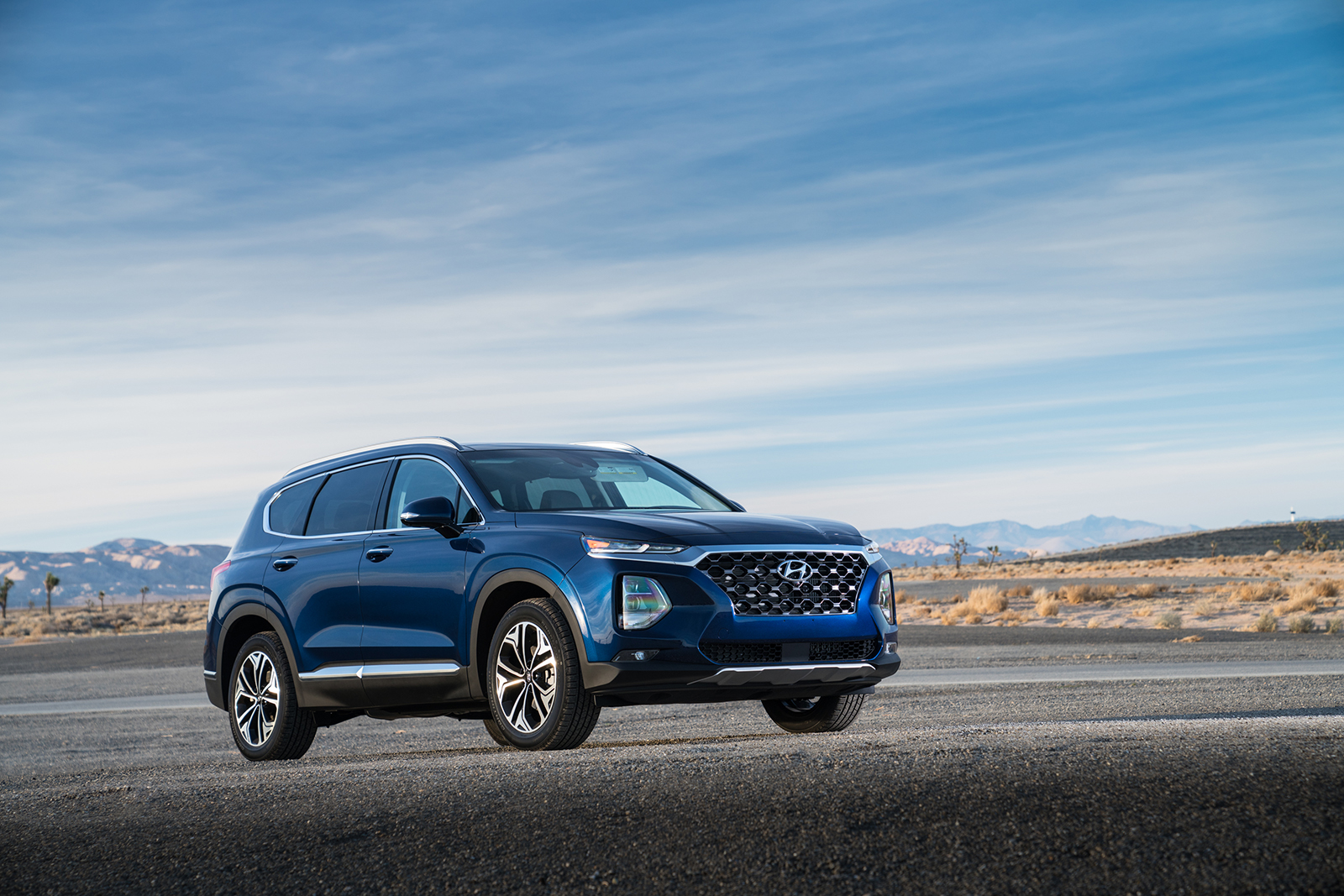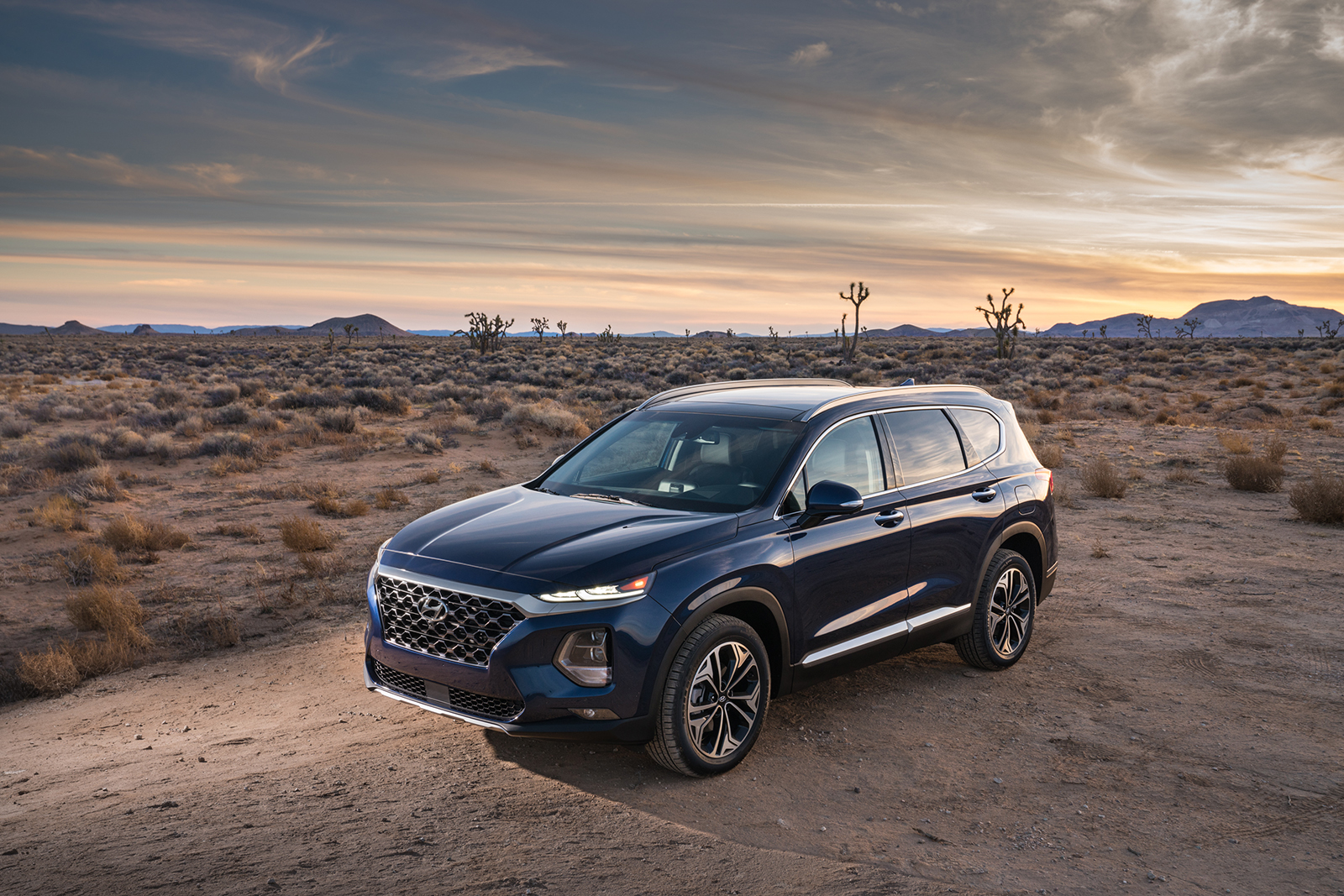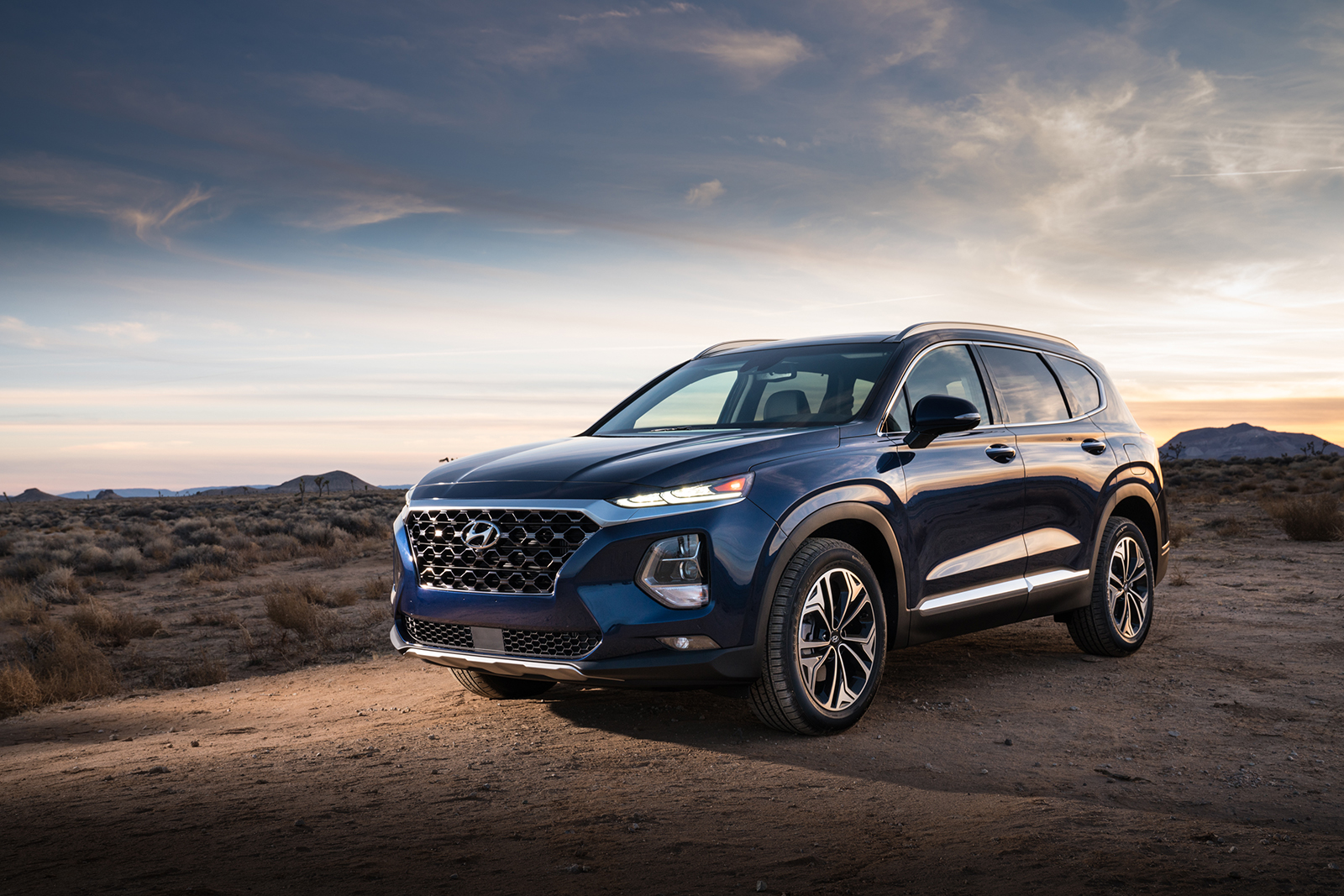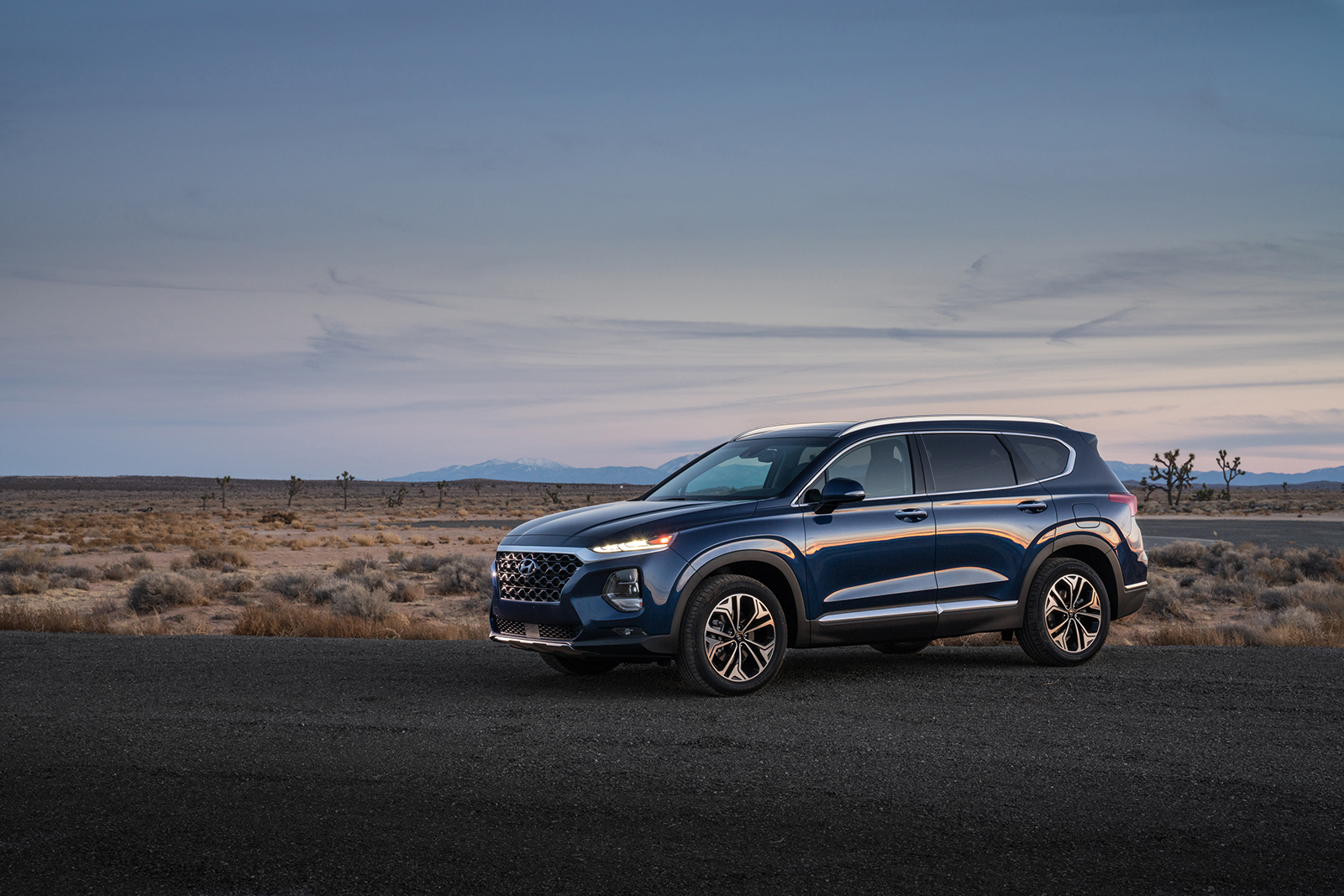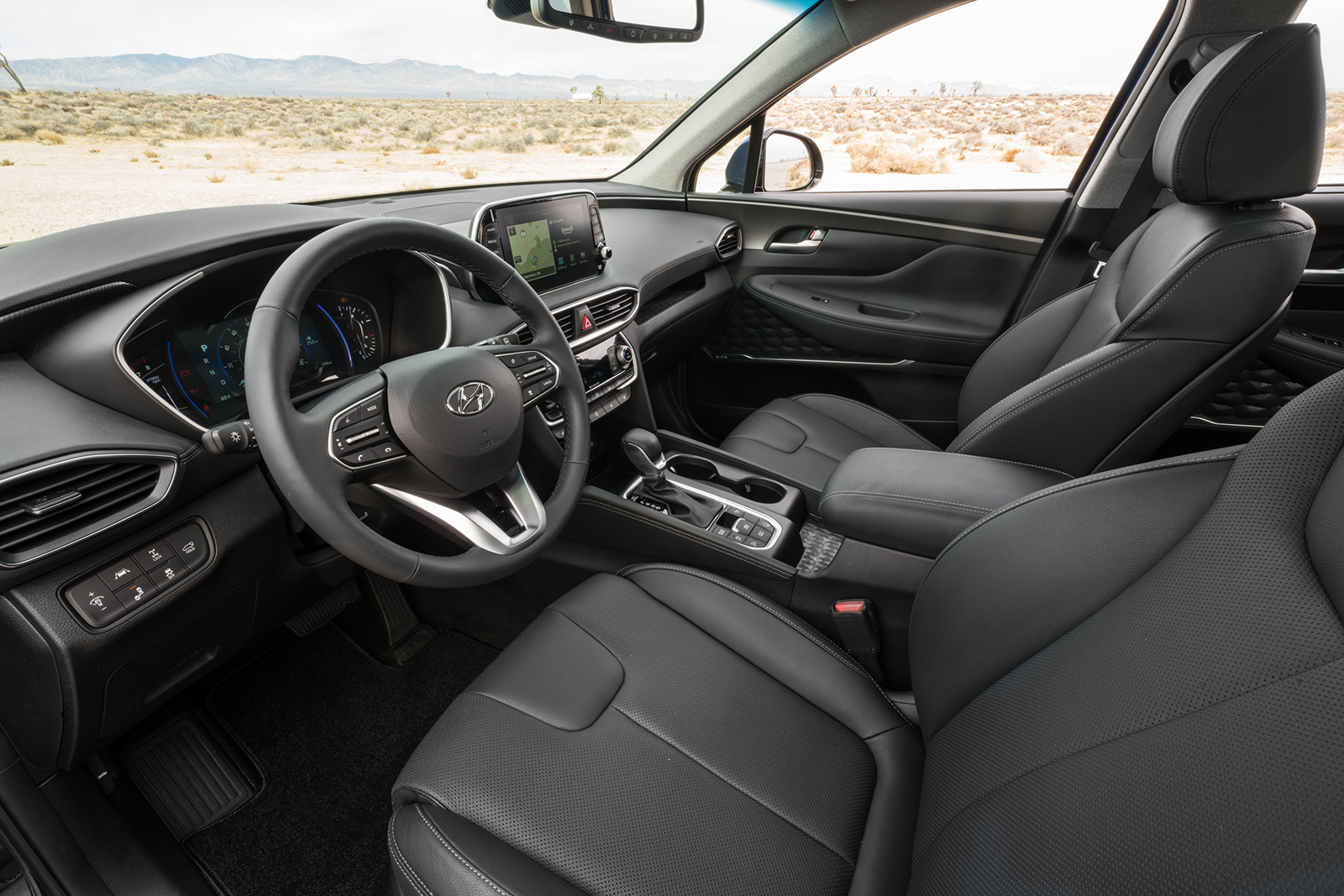First revealed at the 2018 Geneva Auto Show, the next-generation Hyundai Santa Fe arrived in the U.S. to show itself off in New York. Entering its fourth generation, the 2019 Santa Fe is completely new from the ground up with new powertrains, a new design, and a new platform. Gone is the old “Santa Fe Sport” name for the short-wheelbase model, in is the new “Santa Fe” for the short model and “Santa Fe XL” for the long version.
The Santa Fe’s exterior is significantly bolder and edgier, which certainly gives it more road presence than the outgoing model. Forgoing the outgoing car’s “Fluidic Sculpture” corporate design language, the new 2019 Hyundai Santa Fe interestingly follows the way of its smaller brethren, the all-new Kona, but with much larger proportions.
Some of the latest exterior highlights from the Kona include Hyundai’s new “Cascading Grille” and “Composite Light” design, which are said to be easily recognizable from as far as 100 feet away. The larger windows and more upright design increase the greenhouse effect for the interior, and the result is a very airy and spacious feeling.

Speaking of which, the interior undergoes a complete rework, increasing ergonomic friendliness and optimizing interior space. The dashboard takes on more Germanic influence — unsurprising given how a bunch of esteemed German auto executives are running the show at Hyundai. For instance, the infotainment screen sits at the top of the center console with a protruding design, rather than being integrated into the dash.
Because this SUV is new, the changes are also more than skin deep. Riding on a completely new platform, it promises significantly improved ride comfort, handling, and stability at speed, thanks to completely revised suspension geometry. We can likely thank Albert Biermann, the former chief engineer for BMW M, so we imagine the new Santa Fe will be quite excellent from behind the wheel.

Another major introduction for the Santa Fe is a new diesel engine. Gas engines are still available, with a naturally aspirated 2.4-liter Theta II four-cylinder still serving as the base engine with 185 horsepower and 178 pound-feet of torque. Next up would be the 2.0-liter turbocharged version of the same Theta II, offering 235 horsepower and 260 pound-feet of twist. And acting as a flagship and what seems like a replacement for the naturally-aspirated 3.3-liter V6, the new diesel comes from the company’s Asian and European parts bins, where the diesel is quite popular. Displacing 2.2-liters as the “CRDi” turbocharged four-cylinder, the result is 190 horsepower and an impressive 322 pound-feet of twist. Channeling that to all four wheels via all-wheel drive is a new eight-speed automatic.
Speaking of which the latter is lighter than the outgoing six-speed and is said to be quick in its responses. Additionally, the extra gears help to make better use of the engine’s powerbands, improving fuel economy and performance. The Santa Fe’s all-wheel drive system is the company’s signature HTRAC system. It features multiple driving modes, affecting the behavior of the electronically controlled variable-torque-split clutch, allowing for improved torque vectoring between the front and rear axles, which should translate into improved handling in all conditions.
Hyundai said the new Santa Fe and Santa Fe XL will hit showrooms this summer, with pricing details likely surfacing closer to that time.
